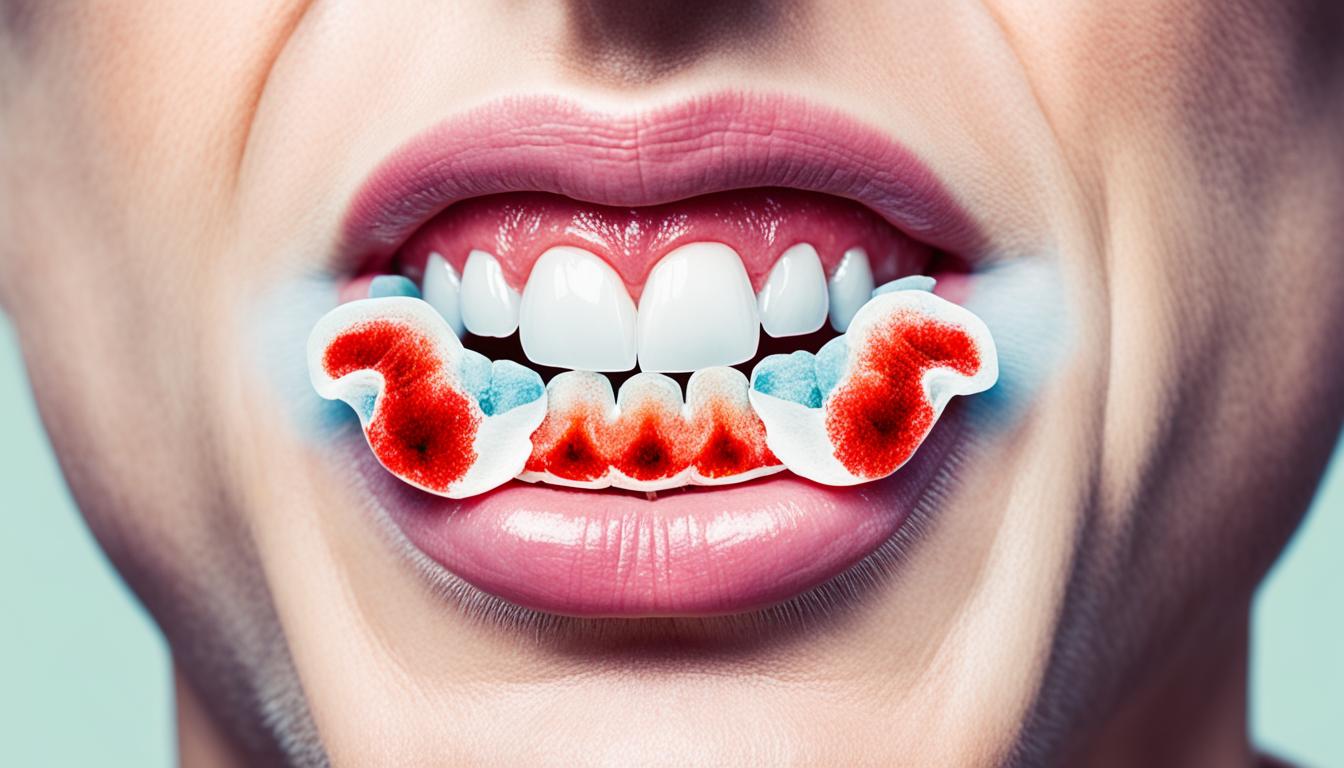Oral candidiasis, called thrush, is an infection by the yeast Candida. This yeast usually lives in our mouth, throat, gut, and vagina without harm. But when the mouth’s balance changes, Candida can overgrow and cause infection.
Symptoms of oral candidiasis are white patches on the cheeks, tongue, and throat. There can be redness and soreness too, with a cotton-like feel in the mouth. Loss of taste, pain when eating, and cracked, red corners of the mouth are also common signs.
Wearing dentures, having diabetes or cancer, or being HIV positive boosts the risk. So does using certain drugs like antibiotics or corticosteroids. Dry mouth and poor oral hygiene increase this risk. Keeping your mouth clean and rinsing after using certain drugs can prevent it.
Usually, doctors diagnose this by looking in your mouth or taking a sample to test. Antifungal medications that you apply in the mouth or take by mouth are the main way to treat it. But now, stem cell therapy is showing great promise in treating oral candidiasis.
Key Takeaways:
- Oral candidiasis is an infection caused by Candida yeast in the mouth.
- Symptoms of oral candidiasis include white patches, redness or soreness, and pain while eating.
- Risk factors for developing oral candidiasis include dentures, diabetes, and dry mouth.
- Diagnosis is usually done through visual examination or mouth/throat sample testing.
- Treatment options include topical or oral antifungal medications.
- Stem cell therapy is a promising treatment approach for oral candidiasis.
Causes and Risk Factors of Oral Candidiasis
Oral candidiasis, known as oral thrush, is a common fungal infection in the mouth. It’s caused by too much of the yeast Candida albicans. This yeast usually doesn’t harm us, but some things can make it grow too much.
Many things can make someone more likely to get oral candidiasis:
- Denture wearers: Dentures sometimes make a good place for yeast, raising the infection risk.
- Diabetes or cancer: People with these health problems are more at risk due to weaker immune systems.
- HIV/AIDS: Those with HIV/AIDS can get oral candidiasis easily because of immune system issues.
- Antibiotics or steroids: These drugs can change the mouth’s balance, letting Candida grow.
- Dry mouth: Certain medicines or conditions that dry out the mouth help Candida grow.
- Smoking: Tobacco can lower immunity and harm the mouth, inviting candidiasis.
Healthy people don’t often get oral candidiasis. But those with weaker immune systems, like people with HIV/AIDS, leukemia, or lymphoma, might. For them, the infection can move to the throat and esophagus.
To prevent oral candidiasis, keep your mouth clean. Brush and floss your teeth and use antiseptic mouthwash. If you take inhaled steroids, rinse your mouth or brush your teeth to stop Candida from growing too much.
Risk Factors for Oral Candidiasis
| Risk Factors | Description |
|---|---|
| Wearing Dentures | Creates an environment that promotes yeast growth. |
| Diabetes or Cancer | Compromised immune function increases susceptibility. |
| HIV/AIDS Positive | Weakened immune system makes individuals more prone to infections. |
| Antibiotics or Corticosteroids | Disrupts the natural balance of microorganisms in the mouth. |
| Dry Mouth | Medications or medical conditions that cause dry mouth create an environment conducive to Candida growth. |
| Smoking | Weakens the immune system and damages the lining of the mouth. |
Diagnosis and Treatment of Oral Candidiasis
Diagnosing oral candidiasis starts with checking the mouth and throat. The doctor might take minor tissue samples for testing. After a positive test, treatment choices are open. Normally, mild to moderate cases need antifungal drugs taken by mouth or applied directly. Medicines like clotrimazole, miconazole, or nystatin fight off the infection. They are used for 7 to 14 days to reduce symptoms and heal.
With severe cases, you might get a prescription for fluconazole. If fluconazole doesn’t work, your doctor may suggest different drugs. If the infection spreads to the throat, fluconazole is often the best option. Remember, treatment varies based on your health and history. Talking with a doctor to find the best plan is important.
Recent studies suggest stem cell therapy might help. This new approach could improve symptoms and lower the chances of the infection coming back. It’s essential to keep up with new findings and talk to your doctor about all treatment options for oral candidiasis.

